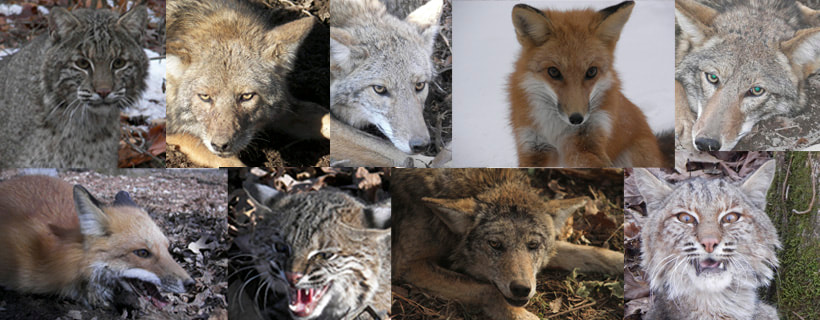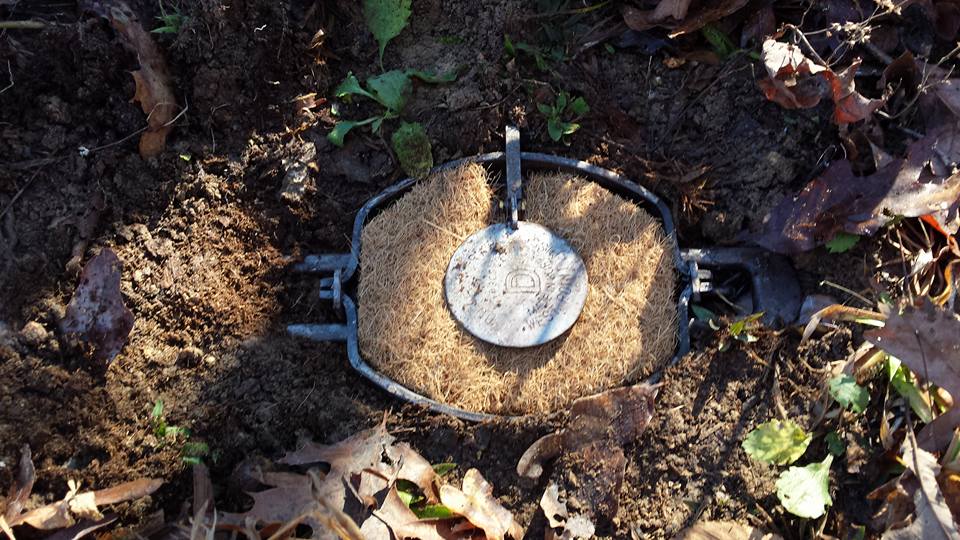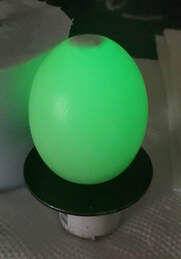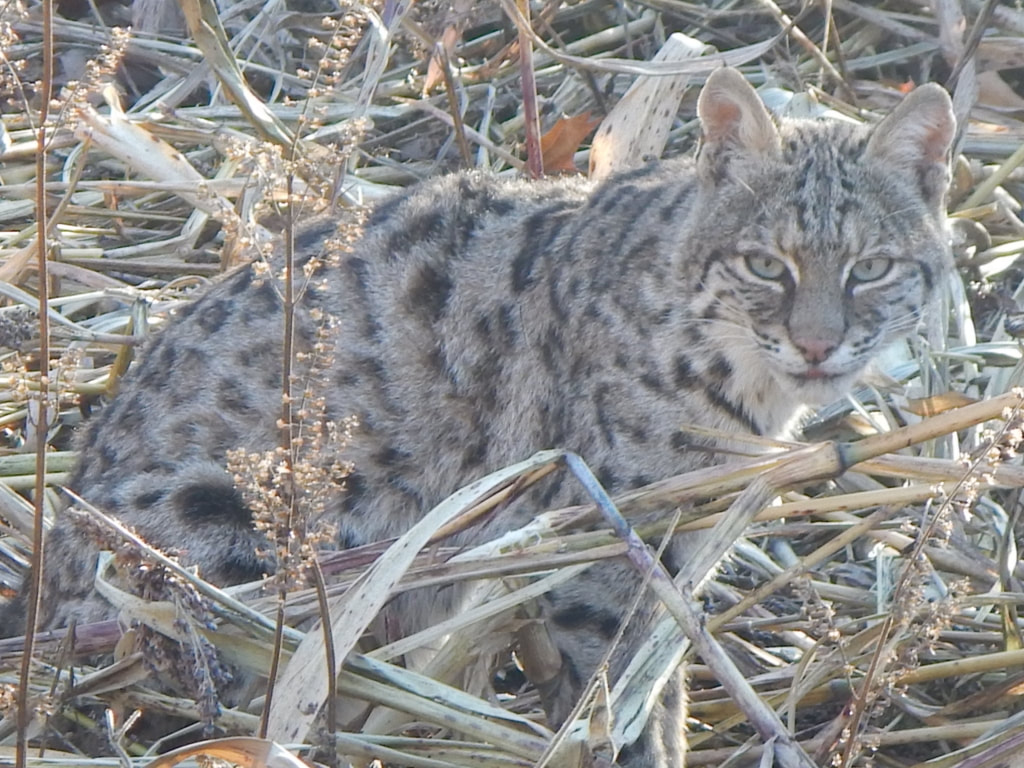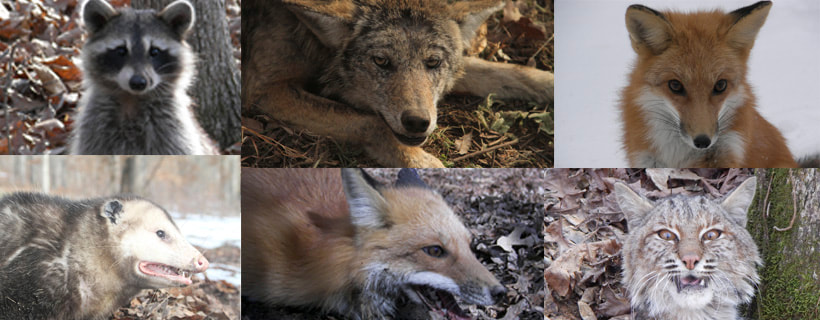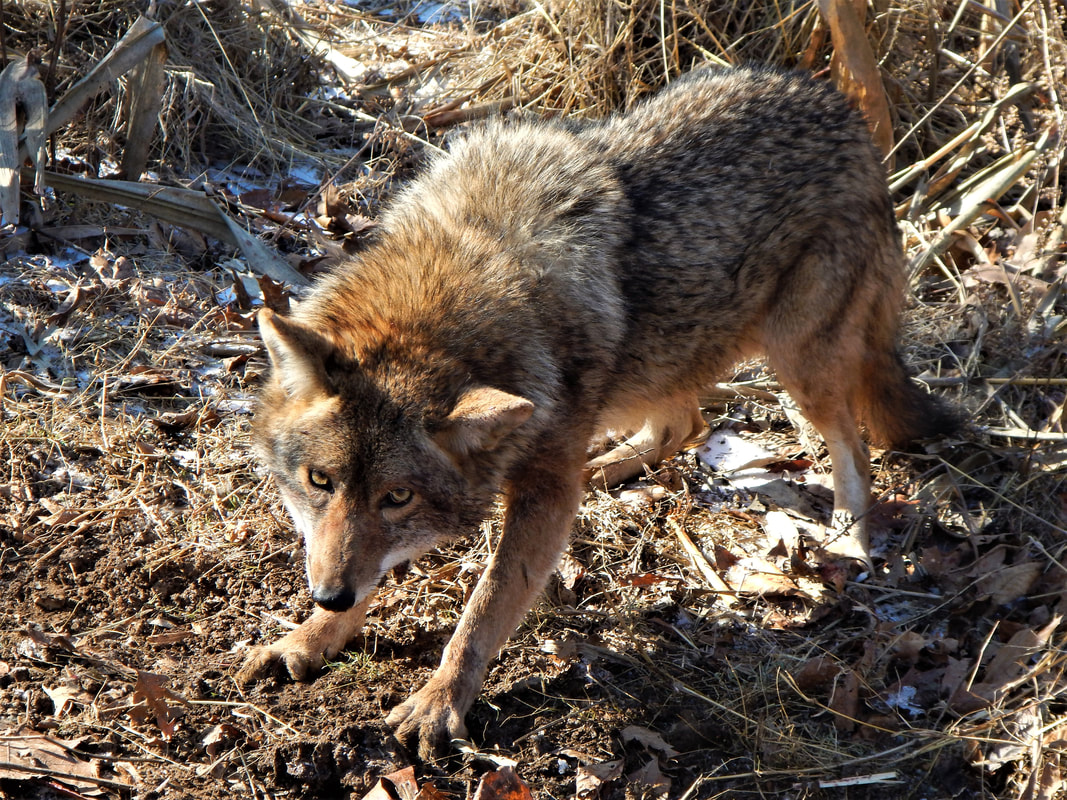Like North American Wildlife & Habitat on Facebook
Order the book on Amazon - http://a.co/hu15aBd
How to Video's for Trapping just click on photo below.
Raccoon Trapping - The Power of the Egg
ROSETTA BOBCAT
By: Allen “horntagger” Morris
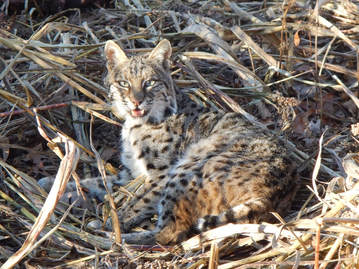
BOBCATS
Most people in the modern time will never get to see a bobcat in the wild. Since Bobcats are mainly nocturnal, seeing a Bobcat in the wild is very exciting and something even hunters don’t get to see very often. Even on today’s game camera’s it is very exciting to see a bobcat. As a trapper it is also exciting to turn the corner and see a bobcat, that you have caught and a prize worth the effort to catch and as your skill grows so will the number of Bobcats that you will catch.
I have about 81 acres in Bollinger County in Southeast Missouri. I consider myself very lucky, as a bow hunter I get to spend a lot time in the woods, and on my property I have viewed over a dozen bobcats in the wild. I have even had one stalk me and my son during a spring turkey hunt. Watching these silent killers, move thru the woods, is a great experience and something you will never forget.
Most Bobcats have a yellowish to reddish brown fur that is streaked and spotted with black. This makes them disappear in almost any environment and the perfect hunter. They will take down deer, and turkeys but their main prey is rabbits, squirrels, rats, mice and birds.
Bobcat coat pattern is like a finger print. They are born with their coat pattern. This does not change as they age. Their coat pattern is unique to them, and it can be used to identify individuals, if you get some good game camera photos you can watch these individual bobcats.
GENETIC TRAITS
Just like humans, wild animals have genetic traits that don’t appear very often and some are heard of from the general public and some are rarely seen. Like an Albino, Piebald or Melanistic deer. These traits also show up in Raccoons, Opossum, Coyotes and Bobcats and have different color phase in for each animal.
But these are not the popular animals in today’s world so you don’t hear about it as much. But it does not change what the animal is. It is still a deer, raccoon, coyote or bobcat. There not magical, if you kill one they don’t bring you bad luck or good luck. They are just an outstanding catch or kill.
Some of these traits are really rare and that is a term that has to be used with caution, because what is rare in one part of the country is not in another. Even what is rare in one part of the state is common in another down to even a county within a state.
But to a hunter or trapper, these wild animals, with these traits can be a once in a lifetime experience, that may never be repeated or experienced again.
ROSETTA BOBCATS
Have to be one of the most beautiful bobcats you will ever see. When you see it, it will be very special experience, not only that you have caught a bobcat, but one that is more beautiful than words can explain, it is an experience you have to live.
The correct terminology is a Bobcat with Rosetta Spots instead of the just yellowish to reddish brown cat streaked and spotted with black. Instead it will have a rose shaped marking or formation, such as one of the clusters of spots on a leopard’s or jaguar fur. Depending on what part of the country you are in how often this genetic trait shows up. No two will be alike either, some may not be as noticeable, then some bobcat will very distinct Rosetta spots.
When you show a Typical Bobcat next to a Rosetta Bobcat the differences are just amazing. It’s like you are seeing a Jungle Cat.
But if you start trying to find information on this genetic trait in the bobcat world, there is little to no information to be found.
Some parts of the country like Southeast Missouri, this is a very rare catch, even a once in a lifetime catch. For example: From a Trapper, Fur Buyer, Taxidermist and Game Warden in this part of the country, they have only seen one or two in their lifetime.
One of the top regional’s Fur Buyers in this part of the county buys bobcat from 10 to 12 states and sees some each year. The most local ones come mostly from the Ozark range, but can be seen across Southern Missouri and Northern Arkansas also, but usually not with marking that well defined or from Southeast Missouri.
He has seen hundreds of bobcats from the Rocky Mountains of Colorado, New Mexico, and Arizona, but cannot recall any rosette cats. But, with further investigation I have seen a few photos of Rosetta Bobcats from that region also.
But in states like southern parts of Texas, Louisiana, Mississippi, Alabama, and Georgia this genetic traits show up more often. In states like Texas, that also might be because Texas has so many bobcats and more caught, the odds go up that all genetic traits show up more often. So this Bobcat is not rare, just not common for lack of a better phrase. But no matter what it’s still consider a spectacular catch.
For a trapper the spotted white belly fur is what the fur industry is looking for and where the money in the fur is. Rosetta Spots on a Bobcat can also bring top dollar across the country depending on length, width of spotting and how the bobcat is put up. North America Fur Auction is the largest handler of wild fur in the world and sells approximately 30,000 bobcats a year, from all over North America.
These rosettes are more prominent in certain areas (in the fur business these are referred to sections), but are by no means common in any of these areas. Commercially these bob cats have greater value than the plain backed cat (rabbit back) with similar size grade and belly color. These cats generally bring a 10 to 20% premium over a plain back type, consequently from a marketing standpoint, it is advantageous for North American Fur Auctions to separate these cats and sell them separately so they can be made into a special piece by the fur industry.
But it’s a taxidermist dream. These cats are sought after by taxidermist to mount and then resale and can bring top dollar.
From the North America Fur Auction the sections that produce more of this type of bobcat are the southwestern states, typically the plains and desert areas, usually sections we refer to as South Western and Western Semi Heavy. The bobcats found at higher elevation the northern tier or the eastern United States have a much lower percentage of the type of spotted backed bobcat.
There are no stats but at auction I am told and this is a guess and only a guess that 50 out of 1000 will have Rosetta Spots will show up at a national auction and this will also depend on the year. But since this trait is wanted by Taxidermist across the country, this number is still skewed from year to year. So there is no scientific way to really know how rare or common this is.
It is not a bobcat you can target it because an incidental catch or kill, as you target bobcats during the season. But sometimes those are the best catches or kills.
SELL OR MOUNT
On November 1st, 2014 I got my first glance at my first ever Rosetta Bobcat on my Game Camera on the Northwest side of my property. I have never seen anything like it. I was able to get more photos of this Rosetta Bobcat along with a very large bobcat on game camera on November 14th as it had switched to the Southeast side of my property. It was like watching a Jungle Cat.
With all the predators roaming my woods, 8 months earlier I decided to step up my game and drove 4 hours for an event in Laurie, Missouri that the Missouri Trappers Association hosted and took a Cable Restraint Certification Class that the Missouri Department of Conservation Department put on.
November 28th, 2014 a day most call Black Friday could not have been a more exciting day. I am sure glad I took the Cable Restraint Class also, because I setup my Cable Restraint on a few trails going to deer carcasses that I had placed from firearms season in the center of my property, because as I walked up and their stands a Bobcat with Rosetta Spots.
There was tons of excitement centered around these Rosetta Spots as I shared photos. I even had 5 offers within 24 hours to buy this 16 lb Female with Rosetta Spots. I was going to sell it to a fur buyer and then found out information on how rare it was for this area.
After 72 hours I decided to have it mounted, because it is highly likely I will never catch another one in my lifetime.
If you do get a bobcat and you can’t decide what to do with it. Here are some suggestion that where passed along to me and the care you should take when putting your bobcat into the freezer.
Freeze it whole with all legs spread and fold the ears down toward the nose. Then take it to an auction. It may be worth a few hundred dollars, depending on how the market is for that year.
Put whole thing in garbage bag. Then put the whole thing in a second garbage bag. You can also add Vaseline to its nose and foot pads to keep them from drying out. But that is your choice.
If you don’t get what you feel it’s worth then have it mounted.
What I have learned after catching this Rosetta Bobcat has been one of the most interesting and hard to find topics I have ever seen, even with modern day worldwide web. The only thing that could have made this cat worth more on the Taxidermy market would have been if it was a big male. This Rosetta Bobcat would bring about what a Typical Big Male would bring from a Taxidermist buying it.
But if you are one of the lucky ones in the country that catch your first Bobcats with Rosetta Spots, I hope these photos and information might help you decide on what you want to do with your Bobcat.
Either way, it is the ultimate predator and a BEAUTIFUL BOBCAT.
Most people in the modern time will never get to see a bobcat in the wild. Since Bobcats are mainly nocturnal, seeing a Bobcat in the wild is very exciting and something even hunters don’t get to see very often. Even on today’s game camera’s it is very exciting to see a bobcat. As a trapper it is also exciting to turn the corner and see a bobcat, that you have caught and a prize worth the effort to catch and as your skill grows so will the number of Bobcats that you will catch.
I have about 81 acres in Bollinger County in Southeast Missouri. I consider myself very lucky, as a bow hunter I get to spend a lot time in the woods, and on my property I have viewed over a dozen bobcats in the wild. I have even had one stalk me and my son during a spring turkey hunt. Watching these silent killers, move thru the woods, is a great experience and something you will never forget.
Most Bobcats have a yellowish to reddish brown fur that is streaked and spotted with black. This makes them disappear in almost any environment and the perfect hunter. They will take down deer, and turkeys but their main prey is rabbits, squirrels, rats, mice and birds.
Bobcat coat pattern is like a finger print. They are born with their coat pattern. This does not change as they age. Their coat pattern is unique to them, and it can be used to identify individuals, if you get some good game camera photos you can watch these individual bobcats.
GENETIC TRAITS
Just like humans, wild animals have genetic traits that don’t appear very often and some are heard of from the general public and some are rarely seen. Like an Albino, Piebald or Melanistic deer. These traits also show up in Raccoons, Opossum, Coyotes and Bobcats and have different color phase in for each animal.
But these are not the popular animals in today’s world so you don’t hear about it as much. But it does not change what the animal is. It is still a deer, raccoon, coyote or bobcat. There not magical, if you kill one they don’t bring you bad luck or good luck. They are just an outstanding catch or kill.
Some of these traits are really rare and that is a term that has to be used with caution, because what is rare in one part of the country is not in another. Even what is rare in one part of the state is common in another down to even a county within a state.
But to a hunter or trapper, these wild animals, with these traits can be a once in a lifetime experience, that may never be repeated or experienced again.
ROSETTA BOBCATS
Have to be one of the most beautiful bobcats you will ever see. When you see it, it will be very special experience, not only that you have caught a bobcat, but one that is more beautiful than words can explain, it is an experience you have to live.
The correct terminology is a Bobcat with Rosetta Spots instead of the just yellowish to reddish brown cat streaked and spotted with black. Instead it will have a rose shaped marking or formation, such as one of the clusters of spots on a leopard’s or jaguar fur. Depending on what part of the country you are in how often this genetic trait shows up. No two will be alike either, some may not be as noticeable, then some bobcat will very distinct Rosetta spots.
When you show a Typical Bobcat next to a Rosetta Bobcat the differences are just amazing. It’s like you are seeing a Jungle Cat.
But if you start trying to find information on this genetic trait in the bobcat world, there is little to no information to be found.
Some parts of the country like Southeast Missouri, this is a very rare catch, even a once in a lifetime catch. For example: From a Trapper, Fur Buyer, Taxidermist and Game Warden in this part of the country, they have only seen one or two in their lifetime.
One of the top regional’s Fur Buyers in this part of the county buys bobcat from 10 to 12 states and sees some each year. The most local ones come mostly from the Ozark range, but can be seen across Southern Missouri and Northern Arkansas also, but usually not with marking that well defined or from Southeast Missouri.
He has seen hundreds of bobcats from the Rocky Mountains of Colorado, New Mexico, and Arizona, but cannot recall any rosette cats. But, with further investigation I have seen a few photos of Rosetta Bobcats from that region also.
But in states like southern parts of Texas, Louisiana, Mississippi, Alabama, and Georgia this genetic traits show up more often. In states like Texas, that also might be because Texas has so many bobcats and more caught, the odds go up that all genetic traits show up more often. So this Bobcat is not rare, just not common for lack of a better phrase. But no matter what it’s still consider a spectacular catch.
For a trapper the spotted white belly fur is what the fur industry is looking for and where the money in the fur is. Rosetta Spots on a Bobcat can also bring top dollar across the country depending on length, width of spotting and how the bobcat is put up. North America Fur Auction is the largest handler of wild fur in the world and sells approximately 30,000 bobcats a year, from all over North America.
These rosettes are more prominent in certain areas (in the fur business these are referred to sections), but are by no means common in any of these areas. Commercially these bob cats have greater value than the plain backed cat (rabbit back) with similar size grade and belly color. These cats generally bring a 10 to 20% premium over a plain back type, consequently from a marketing standpoint, it is advantageous for North American Fur Auctions to separate these cats and sell them separately so they can be made into a special piece by the fur industry.
But it’s a taxidermist dream. These cats are sought after by taxidermist to mount and then resale and can bring top dollar.
From the North America Fur Auction the sections that produce more of this type of bobcat are the southwestern states, typically the plains and desert areas, usually sections we refer to as South Western and Western Semi Heavy. The bobcats found at higher elevation the northern tier or the eastern United States have a much lower percentage of the type of spotted backed bobcat.
There are no stats but at auction I am told and this is a guess and only a guess that 50 out of 1000 will have Rosetta Spots will show up at a national auction and this will also depend on the year. But since this trait is wanted by Taxidermist across the country, this number is still skewed from year to year. So there is no scientific way to really know how rare or common this is.
It is not a bobcat you can target it because an incidental catch or kill, as you target bobcats during the season. But sometimes those are the best catches or kills.
SELL OR MOUNT
On November 1st, 2014 I got my first glance at my first ever Rosetta Bobcat on my Game Camera on the Northwest side of my property. I have never seen anything like it. I was able to get more photos of this Rosetta Bobcat along with a very large bobcat on game camera on November 14th as it had switched to the Southeast side of my property. It was like watching a Jungle Cat.
With all the predators roaming my woods, 8 months earlier I decided to step up my game and drove 4 hours for an event in Laurie, Missouri that the Missouri Trappers Association hosted and took a Cable Restraint Certification Class that the Missouri Department of Conservation Department put on.
November 28th, 2014 a day most call Black Friday could not have been a more exciting day. I am sure glad I took the Cable Restraint Class also, because I setup my Cable Restraint on a few trails going to deer carcasses that I had placed from firearms season in the center of my property, because as I walked up and their stands a Bobcat with Rosetta Spots.
There was tons of excitement centered around these Rosetta Spots as I shared photos. I even had 5 offers within 24 hours to buy this 16 lb Female with Rosetta Spots. I was going to sell it to a fur buyer and then found out information on how rare it was for this area.
After 72 hours I decided to have it mounted, because it is highly likely I will never catch another one in my lifetime.
If you do get a bobcat and you can’t decide what to do with it. Here are some suggestion that where passed along to me and the care you should take when putting your bobcat into the freezer.
Freeze it whole with all legs spread and fold the ears down toward the nose. Then take it to an auction. It may be worth a few hundred dollars, depending on how the market is for that year.
Put whole thing in garbage bag. Then put the whole thing in a second garbage bag. You can also add Vaseline to its nose and foot pads to keep them from drying out. But that is your choice.
If you don’t get what you feel it’s worth then have it mounted.
What I have learned after catching this Rosetta Bobcat has been one of the most interesting and hard to find topics I have ever seen, even with modern day worldwide web. The only thing that could have made this cat worth more on the Taxidermy market would have been if it was a big male. This Rosetta Bobcat would bring about what a Typical Big Male would bring from a Taxidermist buying it.
But if you are one of the lucky ones in the country that catch your first Bobcats with Rosetta Spots, I hope these photos and information might help you decide on what you want to do with your Bobcat.
Either way, it is the ultimate predator and a BEAUTIFUL BOBCAT.
